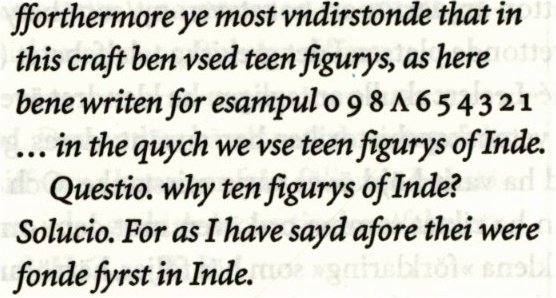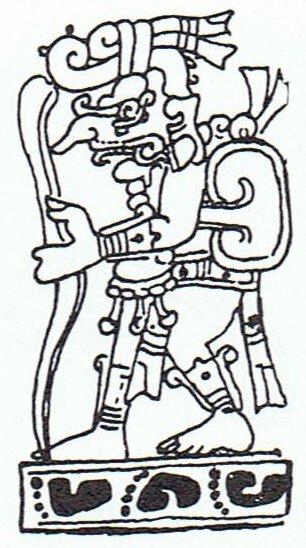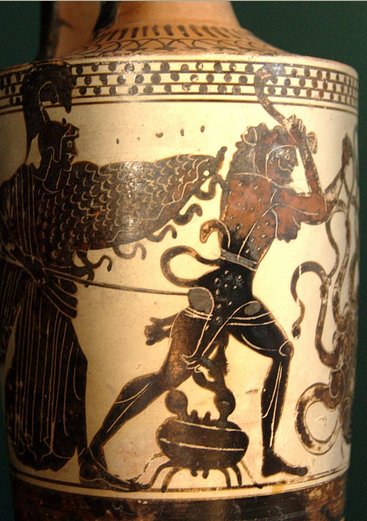Once again. The now healthy little boy was named Motu-ora
= 'Living Island'. Possibly he was in the mind of the
creator of the G text when he incised
the Bright Fire (λ Cancri)
glyph in his tablet:

|
Egyptian
menchet |
 |
Phoenician
lamedh |
 |
Greek
lambda |
Λ (λ) |
|
... Wikipedia has no information
regarding the origin of the Phoenician lamedh,
but the Egyptian 'cloth' hieroglyph (menchet)
is - I suggest - related to the 4 upside down sky
pillars. I.e. the basic element of the 'covering'
hieroglyph could have indicated darkness:


... Men's spirits were
thought to dwell in the Milky Way between
incarnations. This conception has been handed down
as an Orphic and Pythagorean tradition fitting into
the frame of the migration of the soul. Macrobius,
who has provided the broadest report on the matter,
has it that souls ascend by way of Capricorn, and
then, in order to be reborn, descend again through
the 'Gate of Cancer'. Macrobius talks of signs;
the constellations rising at the solstices in his
time (and still in ours) were Gemini and
Sagittarius: the 'Gate of Cancer' means Gemini
...


From the year 755 (when Cancer had
been at July 11 according to the Mayas) to AD 1842
(my assumed baseline for the rongorongo texts) there
were around (1842 - 755) / 71 = 15 precessional
days. This seems to point to the time of the Bull,
when in JANUARY 31 the old year would end
(terminate). 192 (JULY 11) - 31 = 161 (JUNE 10):
...
Midsummer is the flowering season of the oak, which
is the tree of endurance and triumph, and like the
ash is said to 'court the lightning flash'. Its
roots are believed to extend as deep underground as
its branches rise in the air - Virgil mentions this
- which makes it emblematic of a god whose law runs
both in Heaven and in the Underworld ... The
month, which takes its name from Juppiter the
oak-god, begins on June 10th and ends of July
7th. Midway comes St. John's Day, June 24th, the day
on which the oak-king was sacrificially burned
alive. The Celtic year was divided into two halves
with the second half beginning in July, apparently
after a seven-day wake, or funeral feast, in the
oak-king's honour ...
... The Fijian barkcloth that in
the end captures the chief represents his capture of
the land: upon installation, he is said to hold the
'barkcloth of the land' (masi ni vanua). The
barkcloth thus has deeper significance. In general
ritual usage, barkcloth serves as 'the path of the
god'. Hanging from the rafters at the rear, sacred
end of the ancient temple, it is the avenue by which
the god descends to enter the priest ... There is
still more to the barkcloth. The barkcloth which
provides access for the god/chief and signifies his
sovereignity is the preeminent feminine valuable (i
yau) in Fiji. It is the highest product of
woman's labor, and as such a principal good of
ceremonial exchange (soolevu). The chief's
accession is mediated by the object that saliently
signifies women ... |
|
he ruru he taiko |
he kumara he kiakia |
he tuvi |
|
Sula cyanops
... It should be pointed out that
the combined name ruru-taiko refers in
MAO. to a black petrel (Procellaria
parkinsoni). There are no cultural data
available for ruru, which seems to be derived
from PPN. *lulu 'owl'...
There are no cultural data available for ...
taiko (compare RAR. taiko 'black petrel',
MGV. tiaku 'petrel?, omen of death', but the
textual association of taiko and spirits
should be dept in mind ...

...
The transference of the name for
sweet potatoes, kumara, to a sea bird (Oestrelata
incerta or Oestrelata leucoptera)
presents a problem in taxonomy. In a short
recitation that accompanies the string game, the
next bird on the list, kiakia, the white
tern, is associated with the leaves of the sweet
potato ...
White tern. Leucanus albus royanus
...
... Grey tern, Tuvituvi (Procelsterna
caerulea skottsbergi)
...
Anous stolidus
unicolor
... The dark
brown tern with a round tail is called tuao
... I was told that tavi is a small,
lead-colored bird that lives on the little islets (motu)
off the coast. He is supposed to look like the
tuvi, the grey tern, and owes his name to his
call ... |
|
MAY 20 (140) |
21 (*61) |
22 (142) |
23 |
24 |
 |
 |
 |
 |
 |
|
Ga3-1 |
Ga3-2 |
Ga3-3 |
Ga3-4 |
Ga3-5 (64 = 8 *
8) |
|
AL TARF (The End)
= β Cancri
(124.3)
RAS ALGETHI (α
Herculis)
|
χ Cancri (125.2),
BRIGHT FIRE
= λ Cancri
(125.4)
*84.0 = *125.4 - *41.4 |
AVIOR
= ε Carinae
(126.4), φ Cancri (126.8)
*85.0 = *126.4 - *41.4 |
ο Ursae Majoris
(127.4)
*86.0 = *127.4 - *41.4 |
Pushya-8
(Nourisher)
υ Cancri (128.1),
θ CANCRI
(128.2) |
|
July 23 (204) |
24 (*125) |
25 |
26 (187 + 20) |
27 (208) |
|
°July 19 (200) |
20 (*121) |
21 |
22 / 7 |
23 (204) |
|
26 (177 = 6 * 29˝) |
'June 27 |
28 |
29 (*100) |
SIRIUS |
|
"June 12 |
13 (*84) |
14 (165 + 365) |
Te Maro 15 |
16 |
|
Day 365 + 166 = 531 = 18 * 29˝ (Te
Maro 15).


 |
|
... Makoi got up and began
to familiarize himself with the (new) land. (This
took place) on the fifteenth day of the month of
June ('Maro'). He went toward the sheer face
of the rocks (titi o te opata), was
astonished (aaa), came up to the middle (of
the outer rim of the crater), and stood at the very
edge. He looked down and saw the 'Pu
Mahore of Hau Maka' (on the coast)
and said, 'There it is, the hole of the mahore
fish of Hau Maka!' He turned his face and
looked toward the back (i.e., in the direction of
the crater). No sooner had he seen how the dark
abyss opened up (below him), when a fragrant breeze
came drifting by. Again Makoi said, 'This is
the dark abyss of Hau Maka'. He turned
around, walked on in utter amazement, and arrived at
the house. He spoke to Ira, 'Hey you, my
friends! How forgetful we (truly) are. This place is
adequate (? tau or 'beautiful'), the dark
abyss lies there peacefully!' Ira replied,
'And what should that remind us of up here?' All
arose and climbed up. They went on and arrived; they
all had a good look (at the inside of the crater).
They returned home and sat down. Night fell, and
they went to sleep ...
[E:19]
 |
|
CLOSE TO THE FULL
MOON: |
|
NOV 19 (*243) |
20 (324) |
21 |
22 |
23 |
|
GREDI (Goat)
=
α
Capricorni
(307.2),
σ
Capricorni (307.5),
ALSHAT (The Sheep)
=
ν
Capricorni
(307.9) |
Al Sa’d al Dhabih-20 (Lucky One of the Slaughterers)
/
Ox / Herd Boy-9
(Buffalo)
DABIH
=
β
Capricorni
(308.0),
κ
Sagittarii (308.1),
SADIR (Hen's Breast)
=
γ
Cygni
(308.4),
PEACOCK
=
α
Pavonis
(308.7)
*267.0
= *308.4 - *41.4 |
OKUL = π Capricorni
(309.6),
BOS = ρ Capricorni
(309.9)
ARNEB (α Leporis)
MINTAKA (δ Orionis)
|
ο
Capricorni (310.2),
θ
Cephei (310.5)
HEKA (λ Orionis)
ALNILAM (ε Orionis)
|
ROTTEN
MELON
= ε Delphini,
φ Pavonis (311.2), η Delphini (311.4), ζ Delphini, ρ
Pavonis (311.7)
PHAKT (α Columbae)
ALNILAK (ζ Orionis)
|

 |
|
Jan 22 |
23 (388) |
24 |
25 (*310) |
26 |
|
°Jan 18 (383) |
19 |
20 |
21 (*306) |
22 |
|
'Dec 27 (360) |
28 |
29 |
30 |
31 (*284) |
|
"Dec 12 (*266) |
13 |
14 (348) |
14 |
16 |
The Bright Fire star rose 2 days before Te Maro 15 (365
+ 166 = 531 = 18 * 29˝), i.e. 2 days before the time
when Makoi began to familiarize himself with the new
land - where he would stay behind when the rest of the
Explorers sailed home - which happened in "June 15 (166 =
531 - 365), when the Sun reached the right ascension line at
the Nose (the Front) of Ursa Major (Itzam-Yeh):

531 (Te Maro 15) - 2 = 528 (→ 48 * 11) points at
Aldebaran (*68) which would return to visibility in May 28
(148 = 80 + 68 = 84 + 64) + 16 = 164 (= 528 - 364).
|
4 he pia. |
5 he nahoo. |
1
he ngeti uri. |
|
Naholoholo
('Swift-running') |
|
MARCH 25 (84) |
26 (*5) |
27 |
 |
 |
 |
|
Ga1-4 |
Ga1-5 |
Ga1-6 |
|
Rohini-4 (The Red One) /
Pidnu-sha-Shame-4 (Furrow of Heaven)
/
ANA-MURI-2 (Rear pillar - at the foot of which
was the place for tattooing)
ALDEBARAN
= α Tauri
(68.2),
THEEMIN = υ˛ Eridani
(68.5) |
no star
listed (69) |
no star listed (70)
(3112 BC + AD 1842) * 365.25 / 26000 = 70 |

On
Tahiti Aldebaran was named Ana-muri (star
pillar at the end - presumably of summer) and as
a further clue it was stated that when the
Sun reached the 'foot' of Aldebaran it was the
place for tattooing → darkening as observed from
a place south of the equator. Rigel ('Foot') was
at the foot of Orion (as perceived from a place
in the north), i.e. we can interpret 'foot' as
corresponding to time zero (origo) - where Land
(to walk on) in the sky dome had arrived. Here
time was moving quickly (naholoholo)
in contrast to at the solstices.
 |
|
Itzam-Yeh defeated |
May 29 (88 +
61) |
30 (*70) |
|
°May 24 (144) |
25 (*65) |
26 |
|
'May 1 (121) |
2 (*42) |
3 |
|
"April 17
(107) |
18 (*28) |
19 |
|
CLOSE TO THE
FULL MOON: |
|
SEPT 24 (84 +
183) |
25 (*188) |
26 |
|
HAN
= ζ Ophiuchi
(251.0) |
ζ
Herculis,
η
Tr. Austr.
(252.1), η Herculis, β Apodis (252.5) |
ATRIA
=
α
Tr. Austr.
(253.9) |
|
Manacle |
ziqq |
Phoenician zayin |
 |
Greek zeta |
Ζ
(ζ) |
|
... Zeta (uppercase Ζ,
lowercase ζ;
Greek: ζήτα
... is the sixth letter of the Greek
alphabet. In the system of Greek
numerals, it has a value of 7. It
was derived from the Phoenician
letter Zayin. Letters that
arose from zeta include the Roman Z
and Cyrillic З
...
Zayin
(also spelled Zain or Zayn
or simply Zay) is the seventh
letter of many Semitic abjads ... It
represents the sound
[z]. The
Phoenician letter appears to be
named after a sword or other weapon.
(In Biblical Hebrew, 'Zayin'
means sword, and the verb 'Lezayen'
means to arm. In modern Hebrew, 'zayin'
means penis and 'lezayen' is
a vulgar term which generally means
to perform sexual intercourse and is
used in a similar fashion to the
English word fuck, although the
older meaning survives in 'maavak
mezuyan' (armed struggle) and 'beton
mezuyan' (armed, i.e.,
reinforced concrete). The
Proto-Sinaitic glyph according to
Brian Colless may have been called
ziqq, based on a hieroglyph
depicting a 'manacle'.
... The
shaman climbing the 'stairs' or
notches of his post or tree,
pretending that his soul ascends at
the same time to the highest sky,
does the very same thing as the
Mesopotamian priest did when
mounting to the top of his
seven-storied pyramid, the ziqqurat,
representing the planetary spheres
... |
|
|
Nov 27 |
28 |
29 (333) |
|
°Nov 23 |
24 (*248) |
25 (329) |
|
'Oct 31
(*225) |
'Nov 1 |
2 (306) |
|
"Oct 17
(*210) |
18 |
19 (292) |
 |
|
Te Maro 15 |
24 |
Te Anakena 10 |
47 |
|
5 |
Hora Nui 2 |
42 |
Tangaroa Uri 15 |
|
"June 15 (166) |
"July 10 (191) |
"Aug 27 (239) |
"Sept 2 (245) |
"Oct 15 (288) |
|
166 - 16 = 150 |
191 - 16 = 175 |
239 - 16 = 223 |
245 - 16 = 229 |
288 - 16 = 272 |
|
150 - 41 = 109 |
175 - 41 = 134 |
223 - 41 = 182 |
229 - 41 = 188 |
272 - 41 = 231 |
|
109 - 39 = *70 |
134 - 39 = *95 |
182 - 39 = *143 |
188 - 39 = *149 |
231 - 39 = *192 |
|
May 30 (150) |
ST JOHN'S DAY |
Aug 12 (223) |
Aug 17 (229) |
Sept 29 (272) |
|
no star
listed (*70) |
CANOPUS (*95) |
ALTERF (*143) |
(*149) |
MIMOSA (*192) |
|
ATRIA (*253) |
X-MAS EVE |
(*325) |
(*332) |
DENEB KAITOS (*9) |
| →
DARK ABYSS |
→ HUA REVA |
|
→ [E:74] |
→ [E:75] |
|
123 (= 3 * 41) |
I
am repeating this table in order to make clear that my earlier
assumption of equality between for instance Te Maro 15
and "June 15 (according to the epoch of Bharani) should be
adjusted so as to also include the return to visibility of its leading star.
Although I have not listed any heliacal star in May 30 (150) which
could return to visibility in June 15 (166).
| |
1 |
Te Maro 15 |
24 |
Te Anakena 10 |
|
"June 13 (*84) |
"June 15 (166) |
"July 10 (191) |
|
*84 - *16 = *68 |
166 - 16 = 150 |
191 - 16 = 175 |
|
*68 - *41 = *27 |
150 - 41 = 109 |
175 - 41 = 134 |
|
107 - 39 = *68 |
109 - 39 = *70 |
134 - 39 = *95 |
|
May 28 (148) |
May 30 (150) |
ST JOHN'S DAY |
|
ALDEBARAN (*68) |
no star
listed (*70) |
CANOPUS (*95) |
|
ζ Ophiuchi
(*251) |
ATRIA (*253) |
X-MAS EVE |
|
→ Itzam-Yeh defeated |
→ DARK ABYSS |
→ HUA REVA |
|
28 |
We can guess that on Easter Island the Sun light might have been too bright
in January for observing such small and faint stars as those in Cancer.
|
MAY 20 (140 = 204 - 64) |
43 |
JULY 3 (184 =
248 - 64) |
|
 |
 |
|
Ga3-1 (60) |
Ga4-21 (104) |
|
July 23 (204) |
Sept 5 (104 +
144) |
|
GREDI,
ALSHAT
|
SIMMAH
(*351.7) |
|
Jan 22 (387 = 204
+ 183) |
March 7 (431 =
365 + 66) |
|
45
→ 365 - 320 |

|



















